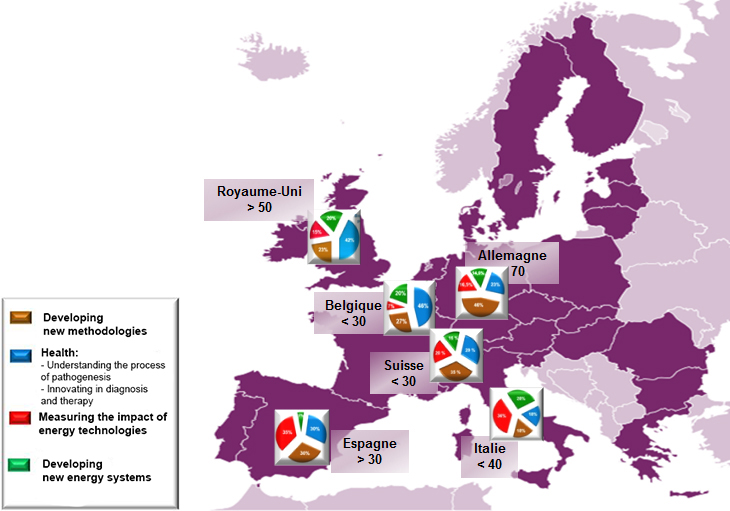The international competitiveness of the DSV in scientific research is illustrated by the dynamic of its collaborations with foreign partners. These collaborations are most often the result of researchers’ initiatives. They can also be the result of a strategy led at the management level, which is reflected in particular by formalizing long-term partnership agreements.
The distribution of the DSV’s bilateral international cooperation is balanced between Europe (49%) and other continents (51%).
An international structuration based on historical partners
The collaborative experience of the DSV with its historical partners supports the development of its emerging programs. This includes bioenergy, as well as the consolidation of nationally strategic research axes like radiobiology.
The United States is the main partner of the DSV and represents nearly one-quarter of its collaborations. More than 40% of all scientific exchanges with this historical partner concern biomedical research.
Germany and the United Kingdom, the main European partners of the DSV, respectively account for 20% and 15% of all bilateral collaborations.
Canada and Japan are also strong partners.
A policy of openness
In recent years the DSV has initiated actions of partnership development with the BRICK countries (Brazil, Russia, India, China, and Korea). The DSV is establishing the conditions for a significant increase in exchanges with these countries over time. It is particularly focused on organizations whose themes are part of its own strategic axes of research, and that present a strong growth potential.
For example, the DSV has initiated a partnership in 2014 with the Butantan Institute in Brazil, in the field of toxins and vaccines.
The tools
The formalization of bilateral relations can be exercised within the framework of general CEA agreements, or by specific DSV agreements. Every year, the DSV signs approximately 20 new agreements (excluding agreements with the European FP) with renowned foreign universities and research organizations. This may include Memorandum of Understanding (MoU), research collaboration agreements, confidentiality agreements, international consortium agreements, etc.
With greater frequency, these agreements involve DSV research platforms (NeuroSpin, MIRCen, etc.), illustrating their progressive deployment on the international scene.
Within the framework of joint research units (UMR), DSV teams also participate in instruments for international collaborations from the CNRS and INSERM, including LIA (Laboratoire International Associé) and the international research group GDRI (Groupe de Recherche International).
Finally, the DSV has developed programs to support international mobility, dedicated to doctoral students (Irtelis) and post-doctoral researchers (Eurotalents and Enhanced Eurotalents).
Cartography
EUROPE: distribution of collaborations by program axis, showing the 6 leading European countries partnered with the DSV

REST OF THE WORLD: distribution of collaborations by program axis, showing the principal countries partnered with the DSV
